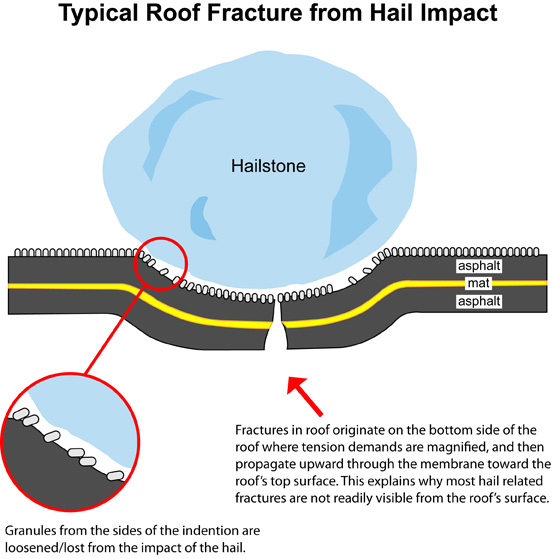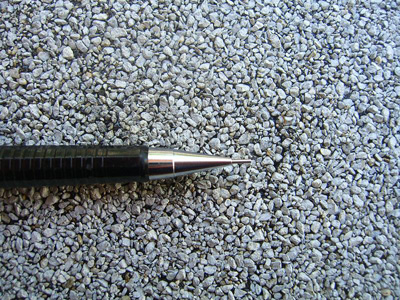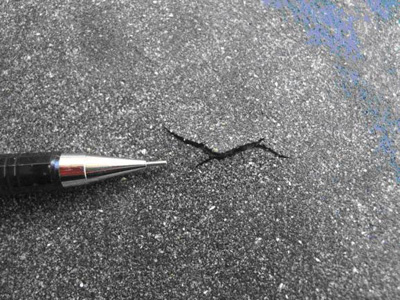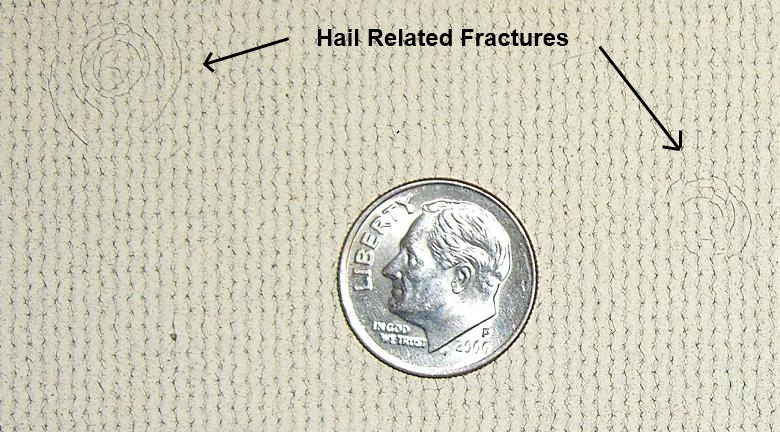How does hail damage roofs
Most hail damage is not obvious to the untrained eye, but looks can be deceiving. Hail creates small fractures in commercial roofs as depicted in the drawing below. Moisture slowly seeps through these fractures and is absorbed by the underlying roof insulation. 3 to 18 months later, when the roof insulation has become fully saturated, interior leaks finally appear. By this point, the storm is often long forgotten (if ever recognized at all).

These fractures in built-up and modified bitumen roofs are typically not visible from the roof’s surface. By cutting the roof membrane and examining the bottom side, the true extent of the damage is revealed. This exact situation is depicted in the pictures below.


Singly ply roof membranes react a little differently. Fractures are visible on the surface, but are often very small and hard to detect unless an inspector has been forewarned that potential hail damage may exist. Roof inspections focused on annual roof maintenance frequently overlook this type of damage as the inspector is focused on seams, flashings, and other common sources of leaking that require periodic maintenance to maintain water tightness. The field of the roof membrane where hail damage will be found is largely ignored as non hail related failures in this area of the roof are extremely rare.

In short, hail damage is hard to detect. By the time interior leaking begins to appear, the hail storm is long forgotten (if ever noticed at all). As roof repair bills spiral, the leaks are improperly diagnosed as maintenance issues, and the roof replacement is funded in error with owner’s capital funds. Ultimately, the insured loss is overlooked.